Itineraries
We already have several itineraries in the book (see pp41-6) as we feel they are useful to use as a base for planning your own trip (note that if you have the 4th edition of Japan by Rail many of the passes have changed so the itineraries may not be valid). However, on this page we will share itineraries we have received from readers.
All page references are for the 5th edition of Japan by Rail.
10-day itinerary
(12 days including flights to/from Japan) with a 14-day Japan Rail Pass (From a traveller we met while updating the third edition)
show more
Day 1 From Tokyo Narita Airport to Osaka Stayed at New Hankyu hotel
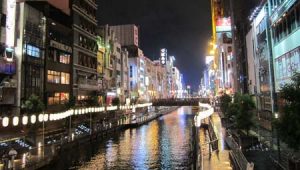
Day 2 Osaka to Koya san Stayed at Fudo-in temple (recommended)
Day 3 Koya-san to Osaka Returned to New Hankyu Hotel
Day 4 Osaka to Hiroshima Stayed at New Hiroden Hotel
Day 5 Hiroshima to Miyajima Stayed at Ryokan Miya Rikyu (recommended)
Day 6 Miyajima to Kyoto Stayed at Karasuma Kyoto Hotel (little English but otherwise good)
Day 7 Kyoto Stayed at Karasuma Kyoto Hotel
Day 8 Day trip to Nara Stayed at Karasuma Kyoto Hotel
Day 9 Kyoto to Hakone Stayed at Ryokan Yoshiike (good)
Day 10 Hakone to Tokyo Stayed at Star Hotel, Shinjuku
Japan by Rail’s comment
Assuming your flight lands at Narita in the morning we think it is a great idea to get the shinkansen to Osaka (Shin-Osaka) on the same day as it gives you time to have a good sleep and to recover from your jetlag. Also you can’t miss your stop as long as you take a shinkansen that terminates in Shin-Osaka! However, we recommend getting a flight to Tokyo and out of Osaka (Kansai International Airport), or vice versa, as it could save some travelling time.
We also think this itinerary is good as it includes a night in a temple as well as one in a ryokan. Two experiences that are really recommended for a trip to Japan.
show less
Two 12-day itineraries
Two groups of travellers to Japan who had 11 days’ travelling in Japan (and flew back on the 12th) have sent us their itineraries; they both had 7-day Japan Rail Passes as they were ending or beginning their holiday in Tokyo and therefore it wasn’t worth having a 14-day pass.
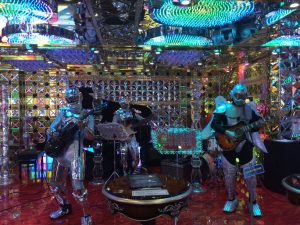
12-day itinerary including Kyushu and Honshu
(Ben S and Alex C travelled in Japan in the spring (March/April) and had a 7-day Japan Rail Pass, which they started on Day 3)
Days 1-3 Haneda to Kagoshima They flew to Haneda and from there direct to Kagoshima. They stayed in JR Kyushu Hotel Kagoshima (p457) for 2 nights as it was right at the station.
show more
Days 3-4 Kagoshima to Hiroshima Stayed in Daiwa Roynet Hotel for one night
Days 4-6 Hiroshima to Tsumago Stayed in Fujioto Ryokan, Tsumago (p192), for 2 nights and highly recommend it
Days 6-8 Tsumago to Hakone Stayed in Lodge Fujimien for 2 nights, but this has now closed so is not included in Japan by Rail
Days 8-11 Hakone to Tokyo Stayed in Sun Members Hotel, Shinjuku, Tokyo for 3 nights; whilst in Tokyo they went to the Robot Restaurant which they said was an incredible experience even though it is a tourist trap.
Day 12 Tokyo to London
12-day itinerary staying on Honshu only
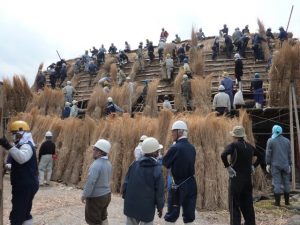
S & D N had a 7-day Japan Rail Pass
Day 1 (Tokyo) Landed at Haneda Airport; stayed at Hotel Gracery in Tokyo.
Day 2 (Tokyo) Visited Asakusa, took a cruise on the Sumida and then visited Odaiba
Day 3 (Tokyo) Day trip to Nikko
Day 4 (Hiroshima): Tokyo to Hiroshima by Bullet train; stayed Hotel Sheraton, visited Atomic bomb memorial, Shukkeien Japanese garden, Hiroshima castle and Miyajima
Day 5 (Kyoto): Hiroshima to Kyoto by shinkansen; stayed Hotel Monterey
Day 6 (Kyoto): Whilst in Kyoto visited Nijo Castle, Nishiki Market, Gion, Kinkakuji, Kiyomizu temple, Fushimi Inari Shrine and Arashiyama
Day 7 (Gero-onsen): Kyoto to Gero-onsen, stayed at Gero Hotspring Ryokan
Day 8 (Takayama): Gero-onsen to Takayama, stayed at Oyado Ryokan, visited Edo village Sannomachi (Takayama city)
Day 9 Takayama; Visited Shirakawa-go
Day 10 (Hakone): Takayama to Nagoya, bullet train to Odawara; stayed at Prince Hotel; went on Hakone cable car and cruise on Lake Ashi
Day 11 (Tokyo): Hakone to Tokyo, stayed Hotel Gracery
Day 12 Depart from Tokyo to London
show less
13-day itinerary

For this trip LR bought a N’Ex Suica at Narita and used that whilst in Tokyo. Tickets were then bought for each journey enabling LR to travel by JR or on a private line, whichever provided the most convenient, cost-effective service.
Day 1 From Narita Airport to Tokyo
Day 2 Tokyo
Day 3 Tokyo
Day 4 Tokyo to Nagiso by train then bus to Tsumago Stayed in Tsumago as Magome accommodation was full
Day 5 Tsumago Took the bus to Magome and then walked back. The walk took 2½ hours and was easy despite the pouring rain.
show more
Day 6 Tsumago to Kyoto Bus from Tsumago to Nagiso, then limited express to Nagoya and shinkansen to Kyoto. The fare for the 35-minute journey was ¥5800 (inc a seat reservation) but the train covered 150km in that time. Very impressed!
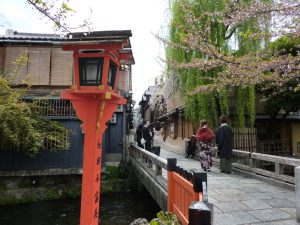
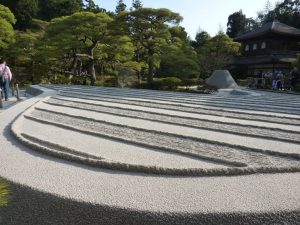
Day 7 Kyoto
Day 8 Kyoto
Day 9 Kyoto
Day 10 Kyoto to Osaka
Day 11 Osaka to Shin-Kobe
Day 12 Shin-Kobe to Koya-san
Day 13 Koya-san to Kansai Airport; night flight back to London
Japan by Rail’s comment:
We almost always say the Japan Rail Pass, or indeed any JR Pass, is essential for a trip to Japan. However, for this itinerary it definitely wasn’t. If your trip includes two reasonably long shinkansen journeys it is likely the rail pass will be cost effective, even if you only stay for a week. The factors that made it better to buy individual tickets for this itinerary are that:
- LR stayed in Tokyo and then Kyoto for several days;
- The trip to Tsumago was off the shinkansen route;
- Kyoto, Osaka and Kobe are easily accessed by both JR and private lines so the additional cost of the shinkansen isn’t worth it unless you are in a real hurry;
- The itinerary included Koya san where access is only possible using a private line.
show less
14-day itinerary
M Harvey spent the first week in Tokyo and then a week travelling with a 7-day Japan Rail Pass.
Days 1-3 Tokyo to Kyoto Stayed at Kyoto Tokyu Hotel
Day 4 Kyoto to Hiroshima and then on to Miyajima Stayed at Kinsui Villa: lovely welcome and superb meal
show more
Day 5 Miyajima to Matsumoto via Nagoya Stayed at Marumo Ryokan (pp218-19)
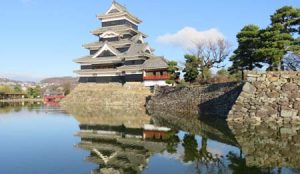
Day 6 Matsumoto to Bessho-onsen Stayed in Ryokan Hanaya (p182): highlight of the trip
Day 7 Bessho-onsen to Nikko Stayed in Tsurukame Daikichi Inn (p325)
Day 8 Nikko to Tokyo
Japan by Rail’s comment:
This itinerary is good because it includes Kyoto, Miyajima, Nikko as well as an onsen and going to Matsumoto (from Miyajima via Nagoya) makes it into a kind of circular trip (ie the journey back to Tokyo wasn’t on the shinkansen all the way). M Harvey decided to have three days in Kyoto as there is so much to see; thus her 7-day rail pass expired when she was in Nikko so she had to pay the fare from there back to Tokyo.
show less
16-day itinerary
Helen A was in Japan for 16 days but only had a 7-day Japan Rail Pass; she only activated the pass when she left Hakone as it is best to have a Hakone Freepass there and the pass can include travel from Shinjuku.
Days 1 & 2 in Narita Town: Stayed at Mercure Hotel; explored Narita Town and the surrounding area

Days 3-7 in Tokyo: Stayed at Family Inn Saiko, Ikebukuro (Tokyo). Two days in Tokyo visiting Asakusa, Tsukiji, Hama Rikyu and Imperial Palace Eastern gardens, day trip to Nikko and day trip to Kamakura – Museum of Literature (for the rose garden); Daibutsu, Enoshima and monorail.
Days 7-9 in Hakone Stayed in Posh Hotel, Odawara. Visited Hakone Open-air Museum and Lake Ashi; my Hakone experience: 1 out of 10 – I have wonderful pics of fog; the open-air museum was 9 out of 10 but only because I couldn’t see beyond the first sculpture when I arrived, although it did clear a bit later.
Day trip to Atami Had a hot bath at a spa in Atami which looked very rundown and uncared for but it restored my spirits after going round in circles to find a geyser which is now virtually extinct.
show more
Days 9-11 in Okayama Visited the Oriental Museum, castle and Korakuen. Day trip to Kurashiki and Ohara Art Museum and Ohashi House.
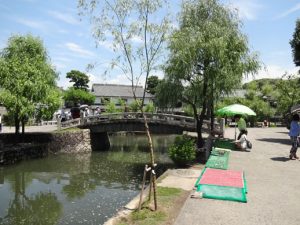
Days 11-13 in Hiroshima Stayed at Hotel Active. Visited the Peace Park, Museum and Shukkei-en garden; day trip to Miyajima
Days 13-16 in Kyoto Visited Nishi-Hongan-ji, Higashi-Hongan-ji and Fushimi Inari, Kinkaku-ji, Museum of World Peace, Ryoan-ji, Arashiyama and Imperial Palace tour, Kyoto. Also visited Nara (Tofuku-ji) and had a day trip to Kanazawa – Museum of Gold Leaf and Geisha area and another day trip back to Yokohama in hope of seeing Mt Fuji from the shinkansen.
Japan by Rail comment
Helen’s flight arrived late so it made sense to stay near the airport and Narita Town is a great introduction to Japan.
As she was travelling on her own and discovered that the ryokan in Hakone would charge for two people as she wanted to stay a Saturday night so she stayed in Odawara. The geyser Helen tried to find in Atami is the Oyu Geyser; we no longer include it in Japan by Rail as we agree it is not that impressive! The advantage of having a Japan Rail Pass and being based in Kyoto is that you can go to a lot of places as day trips without having to carry your luggage around. As you can see Helen made use of her pass going to the Yokohama area for the day, largely in an attempt to see Mt Fuji from the shinkansen, and also Kanazawa for the day.
show less
Four-week itineraries
We now have two very different itineraries from people who have been lucky enough to be able to have trips to Japan lasting four weeks. The first are RU and JB whose trips covered Honshu and Kyushu and the second is RA who focused on Shikoku and Honshu.
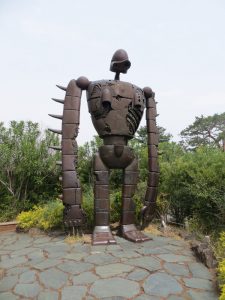
RU and JB’s itinerary started with a week in Tokyo using a Suica Card & N’EX and then using a 21-day Japan Rail Pass for the final three weeks.
Budget for time in Japan (excluding cost of Japan Rail Pass) was £1500. Apart from where specified they mostly stayed in branches of Toyoko Inn as they are almost always close to the station and reliable.
Day 1 Narita Landed early evening so decided to spend first night at Toyoko Inn Hotel near Narita Airport.
Days 2–8 Tokyo Bought Suica & N’EX. Spent week seeing the main highlights and attractions of the city including the Studio Ghibli Museum, Shinjuku, Harajuku, Asakusa, Akihabara and Odaiba. Stayed in Shinjuku and Akihabara.
Day 9 Started Japan Rail Pass: Tokyo to Kyoto
Days 10-12 Kyoto Visited Fushimi Inari Shrine & Sekiho-ji, Kinkaku-ji, Nijo Castle, Arashiyama and Osaka. (Unfortunately the place they stayed in Kyoto has now closed)
show more
Day 13 Kyoto to Hiroshima
Days 14–16 Hiroshima Visited the Peace Park – all in one area; day trips to Miyajima and to Okayama and Korakuen. Stayed in K’s House; also highly recommend.
Day 17 Hiroshima to Nagasaki
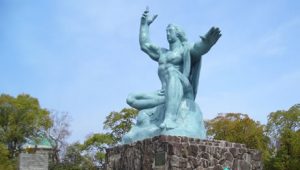
Days 18-19 Nagasaki Visited the Peace Park – sights are more spread out; museum smaller but more graphic and emotional impact; Glover Garden and the Nagasaki Ropeway.
Day 20 Nagasaki to Kagoshima
Days 21-22 Kagoshima Day trips to Sakurajima and Ibusuki; the latter for the natural hot sand bath.
Day 23 Kagoshima to Mishima
Days 24 Mishima Day trip to Hakone to see Lake Ashi and Mount Fuji.
Day 25 Mishima to Tokyo
Days 26–28 Tokyo Day trips to Kamakura, Kakunodate (on the Komachi); also visited more places in Tokyo such as Ueno market and Roppongi.
Day 29 Narita Town Last night spent in Narita Town
Japan by Rail’s comment:
This itinerary makes good use of the shinkansen network and thus was very good value in terms of the Japan Rail Pass. We can understand why they included both Hiroshima and Nagasaki as both have interesting sights in addition to the respective Peace Museums. We also think it was a good idea to spend more time at the end based in Tokyo and do day trips – it is amazing how far you can go quite easily on any of the shinkansen services and still have a good day out.
If flying out of Narita we think it is very sensible to spend the last night in Narita Town as it is a very atmospheric place, has a wonderful temple to visit and is also a good place for last-minute shopping.
RA’s itinerary
RA had a 4-week trip to Japan combining sightseeing and visiting family. As stated above their itinerary focused on Shikoku and Honshu.
Day 1: Arrived Haneda Airport; changed exchange voucher for Japan Rail Pass and also bought Pasmo.
From airport took the monorail to Hamamatsucho station (about 18 minutes) and from there to Tokyo station (3 stops about 8 minutes) on the Yamanote Line.
Took Hikari shinkansen to Okayama
Day 2: Marine Liner train to Takamatsu (frequent service; 51 mins)
Visited Ritsurin Park
From Takamatsu took JR Kotoku train to JR Yashima. Walked to Kotoden Yashima station and took shuttle bus to Yashima from there.
Returned to JR Yashima and from there to JR Naruto.
Day 3: Visited temples (Shikoku 88 Temple Pilgrimage): No 1 Ryouzen ji (Naruto), No 2 Gokuraku-ji (Naruto), No 3 Konsen-ji (Itano)
Day 4: Visited Naruto Whirlpools; returned to Takamatsu on JR Kotoku Line
Day 5: Took train to Kotohira (options are JR or Kotoden Kotohira line); visited Kompira-san
Day 6: Takamatsu to Okayama then took a hikari to Shin-Osaka
Visited Temmangu Shrine
Days 7-9: To Kyoto (JR Osaka station Sanyo/Tokaido mainline to JR Kyoto); stayed there and (by train or day/2-day pass for Kyoto city bus) visited:
- Fushimi Inari Taishya Shrine (Inari station, JR Nara line), walked through the Torii to Sakura mon gate, the inner and main Shrine, then to the Thousand torii
- Fushimi Castle and Zuikou-ji temple (Momoyama station. JR Nara line)
- To-ji temple (Toji station, Kintetsu Kyoto line)
- Arashiyama (Bamboo Grove), Ninna ji, Ryouan-ji, Kinkaku-ji, Kitano Tenmangu, Ginkaku ji, Yasaka Pagoda and Yasaka-ji,
- Nishiki market, Gion Pontocho and Kiyomizu-dera
Day 10: Took JR train to Kanazawa; visited Kenrokuen, Kanazawa-jo park including Ishikawa mon.
Day 11: From Kanazawa took Hokuriku shinkansen to Nagano
Day 12: To Matsumoto to see the castle
Day 13: Matsumoto to Tokyo
Day 14: Tokyo to Sendai by shinkansen; went to Naruko-onsen by bus
Day 14: Returned to Sendai
Day 18: Went to Ishinomaki to visit Ishinomori Manga Museum. Ishinomaki is the town where most people died with the tsunami and JR East earthquake.
Day 20: By bus to visit Mito, a samurai town and then visited the best place for fruits, Fukushima
Day 25: JR shinkansen to Ueno
Days 25-28: Days to visit Yokohama and several places in Tokyo.
Japan by Rail’s comment:
This four-week itinerary included some days in Shikoku and also the area affected by the JR East earthquake, both of which are off-the-beaten-track for many travellers (of course unless spending many months in Japan no itinerary can include everywhere). As for most people RA went to Kyoto and Tokyo as well as Kanazawa which is now reached easily by the Hokuriku shinkansen. Four weeks is a great length of time to have in Japan and this was a varied itinerary.
show less
